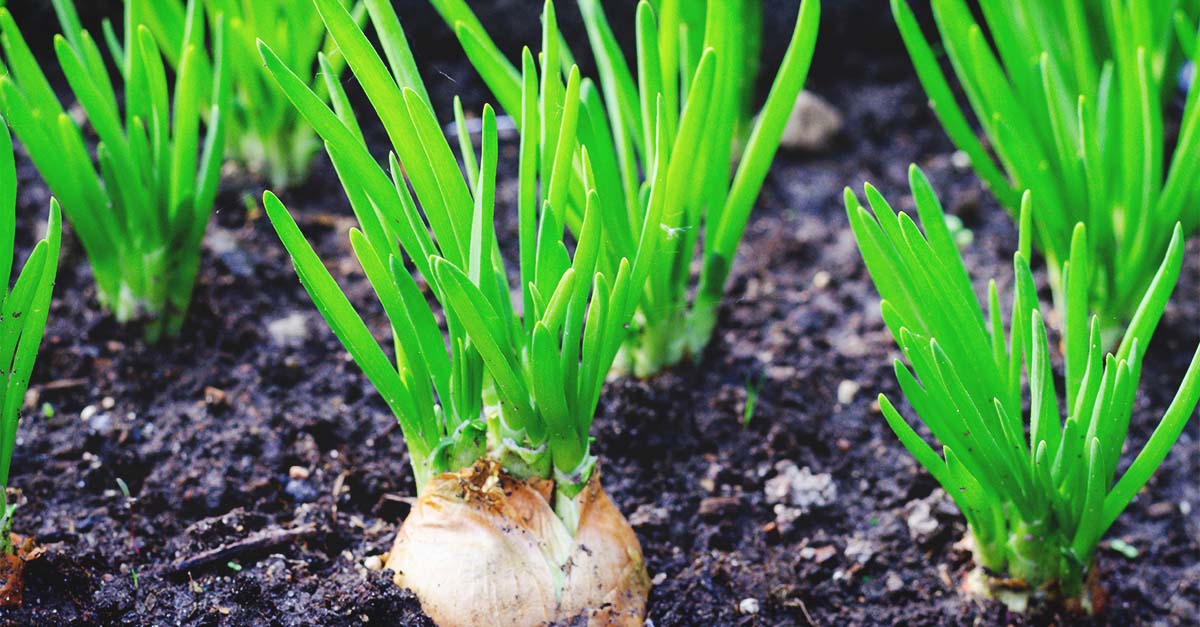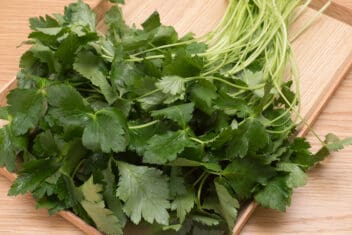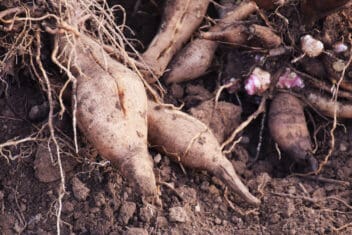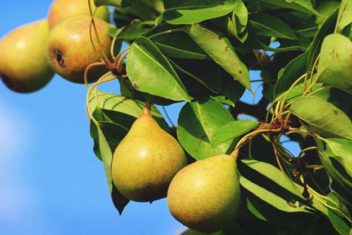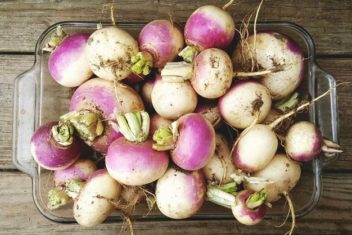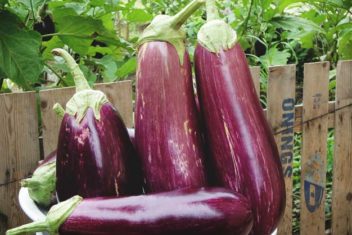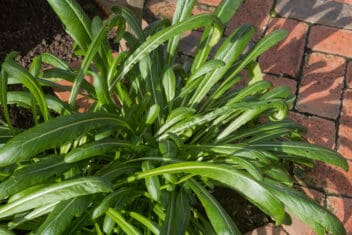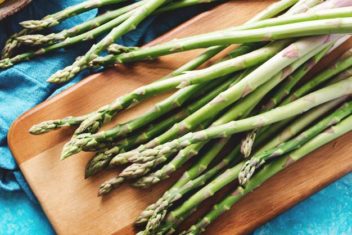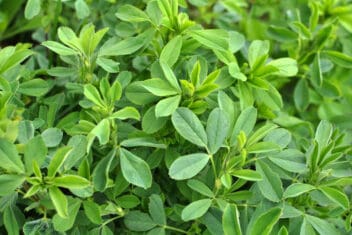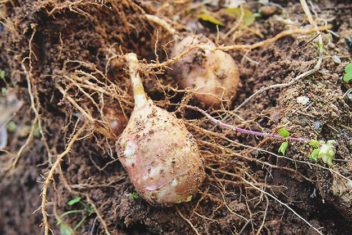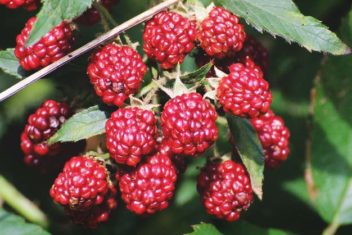I learned about shallots when I got my first CSA basket years ago. I encountered a slew of vegetables that I had never heard of before, shallots included. In my household, shallots were often the name given to sliced green onions. Now that I know the difference, I always have shallots growing in my garden.
They look like onions, smell like onions, and taste rather onion-y, but shallots aren’t onions. Though they’re often called multiplier onions, shallots are in fact an onion relative (they’re part of the allium family of vegetables).
These gourmet onion-like veggies resemble small onions. Cook them, and they’ll infuse a delicate onion flavor into whatever dish you’re cooking. Be prepared to cry when slicing shallots! They’re little but mighty and can induce tears from even the toughest of cooks.
If you’ve grown onions, you’ll have no problem cultivating shallots.
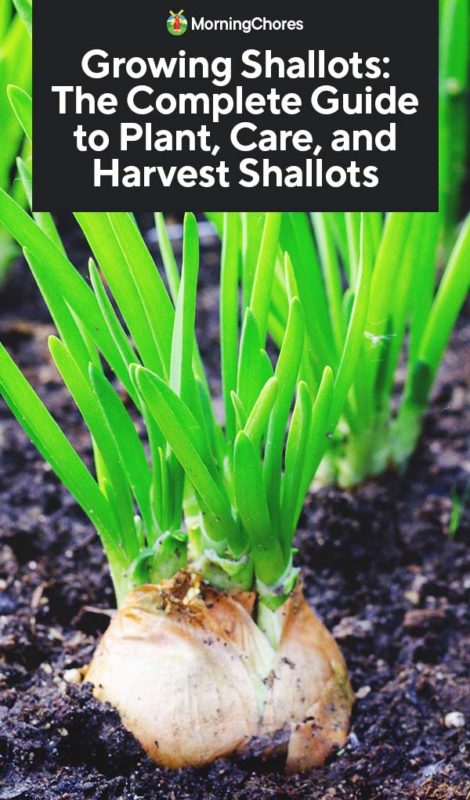
The Difference Between Shallots and Onions
If you’re puzzled and scratching your head, don’t worry. I’ll admit it’s a bit confusing! Shallots look a lot like small onions, so why are they different?
The green portion of the shallot plant has a strong resemblance to the shoots of bunching onions or scallions. The flavor is similar, too. The main difference is in the appearance of the bulb. Instead of a single uniform bulb, shallot bulbs are similar to garlic. The bulbous clove-like formation, however, isn’t connected like that of garlic. Shallots, unlike most onions, typically have an oblong sort of shape. They also have a thick outer skin that varies in coloration from red to tan.
How are they different?
- Growth habit: shallots grow in clusters, unlike onions, which form uniform bulbs.
- Sweetness: shallots are a little sweeter than onions.
- Mild taste: the flavor of shallots is milder than that of onions.
How are they similar?
- They both belong to the allium family.
- Both plants have a similar (though, distinct) flavor.
- You can use both raw or cooked.
- They’ll both make you cry.
- They’re both offer up health benefits, including lowering blood pressure.
Shallot Varieties
The most common type of shallot found at the grocery store is the red-skinned variety, but there are a few other kinds of note.
- French-Italian: This type of shallot usually has red-tinged skin. They also have uniform bulbs, and their flavor is mild — somewhere in between garlic and onion. Varieties include ambition, atlas, creation, French red, and pikant. These types of shallots mature within about three months. They are not the best choice for long term storage compared to other varieties of shallots.
- Welsh shallot: These are best for harvesting green tops. Sub-types include Louisiana evergreen.
- Gray shallot: Often thought to be the superior tasting shallot, this type produces large bulbs with greyish skins. They require a longer growth period than French shallots and are also not the best choice for long term storage.
- Dutch shallots: These types of shallots have a more pungent flavor than other varieties. Their skin is usually yellowish or tan, and the bulbs are typically rounder compared to other varieties. They’re an excellent storage variety. Varieties include chicken leg and Dutch yellow.
Planting Shallots
While shallots and onions have a few notable differences, they both grow in mostly the same way. Like onions, shallots can be grown from seed or sets. Sets are more common since they’re easier and quicker.
Growing Zones
Shallots grow well in zones 3-10.
Soil Requirements
Shallots prefer soil with a pH between 6.0 and 7.0. They do best in loose, well-drained, fertile earth.
Sun Requirements
Shallots need full sun to partial shade.
Timing
Put plants in the ground 2-3 weeks before the last frost date when temps are above 32°F.
You can also put them in the ground in the fall, but growers should mulch to protect the shallots — similar to how you would deal with fall-planted garlic.
In the spring, growers should also mulch if planting early in the season to protect shallots from cold snaps. But sets can be planted as soon as the soil is workable in the spring.
Spacing
When planting, space shallot transplants or sets about 4 to 6 inches away from one another at about 2-inches deep in the soil. Choose similarly sized sets when planting for a uniform harvest. Choose larger bulbs, if possible, as you would with onions. Bigger bulbs produce larger mature shallots. Plant shallot sets as you would onion sets with the root tip down and the pointy end up.
If you’re planting square-foot-gardening-style, plant nine shallots per square foot.
Container Growing
It’s also possible to plant transplants from a nursery or grown indoors. Start seedlings at least a month prior to transplantation in the spring. If you’re short on space, consider planting shallots in a container. A small 8-inch container can accommodate at most three sets.
Caring for Shallots
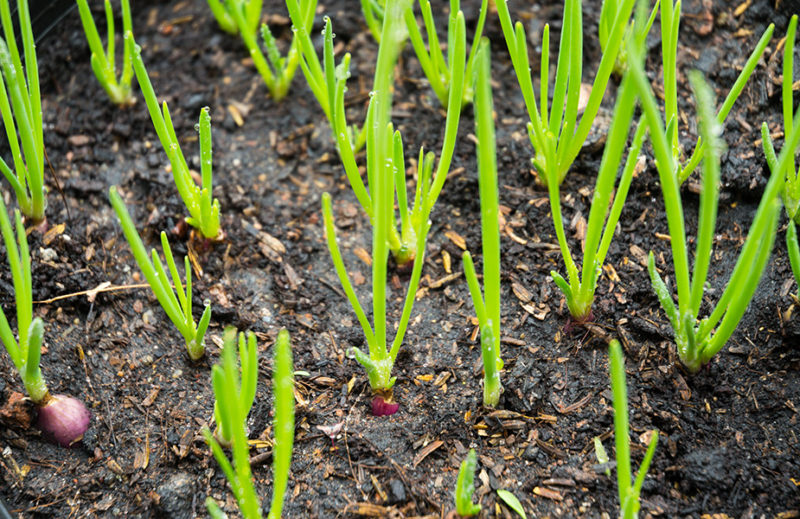
Watering
A shallow root system means that frequent watering is incredibly important. Keep an eye on the soil to ensure it doesn’t dry out. You’ll have more trouble keeping your shallots well-watered if they’re planted in sandy soil.
Fertilizing
It’s vital that shallots have nutrients available throughout their growth. They’re heavy feeders, similarly to garlic, so feed them several times throughout their growth period.
Mulching
Mulch shallots in the late fall or early spring to protect the young plants from periods of extreme cold. Mulching also helps retain moisture and keep down weeds.
Succession planting
Plant sets every few weeks for a continuous supply of shallots. To keep sets fresh, store in the fridge between plantings.
Pruning
Some gardeners prefer to cut the tops of allium family plants to encourage the plant to focus its energy on produce a bulb. This practice isn’t necessary, but it can help with bulb growth. At the same time, cut the tops and enjoy them in a variety of dishes.
Problems and Solutions to Growing Shallots
The biggest challenge when growing shallots is disease, as few pests tend to target these plants.
As a general rule, don’t plant shallots where you recently planted any type of allium. Promptly remove diseased plants from the area to prevent the spread of disease.
It’s also essential to thoroughly weed shallot beds to prevent other plants from hogging all the moisture and nutrients.
White Rot
White rot is another common problem. By the time you see the yellowing foliage that indicates there’s a problem, it’s too late to do anything. Your best option is to buy certified disease-free stock, wash tools between use, and rotate your crops. If you have any infected plants, pull and destroy them.
Purple Blotch
Purple blotch is caused by a fungus that likes warm, wet weather. You’ll see elliptical brown or purple lesions on leaves, and plants may start to wilt. Avoid it by rotating your crops, sanitizing your tools, and keeping weeds at bay. You can also use fungicides to control it.
Leaf Blight
Known as onion blight or botrytis leaf blight, this fungal disease causes whitish leaf spots on older leaves and can cause the plant to die back. Destroy infected plants and use a fungicide to control.
Downy Mildew
The best way to prevent diseases like downy mildew from affecting your shallot plants is to practice crop rotation and ensure that tools and equipment are adequately stored and sanitized each season.
Cutworms
Cutworms are nasty little pests that can hide out in the soil over winter. They emerge in the early spring to nibble on plants at the base, severing the tops as they chew their way through. To control them, make cardboard plant collars, pick the maggots (it’s easiest to do this at night), and sprinkle diatomaceous earth around plants.
Onion Maggots
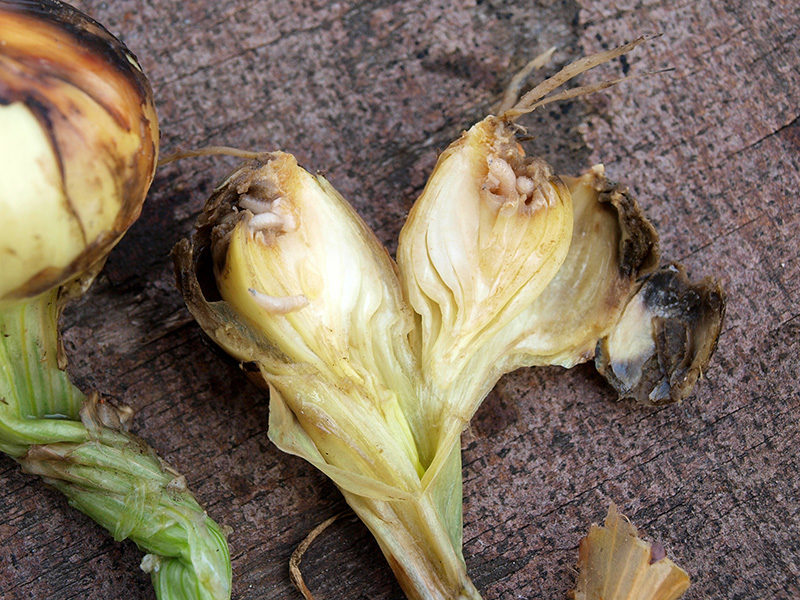
Companion Planting for Shallots
Shallots are an ideal companion plant for a multitude of garden fruits and vegetables, including:
- Cabbage
- Beets
- Chamomile
- Mint
- Sage
- Thyme
- Broccoli
- Brussel sprouts
- Cauliflower
- Celery
- Collards
- Cucumber
- Dill
- Lettuce
- Potato
- Savory
- Rose
- Carrots
- Strawberries
- Tomatoes
Like other allium family plants, shallots are well-known for their pest repelling qualities. Few pests tolerate the pungent scent of alliums and are less likely to bother plants placed near shallots, onions, leeks, and garlic.
Don’t plant shallots next to:
- Broad beans
- Bush beans
- Pole beans
- Parsley
- Asparagus
- Gladiolus
Harvesting Shallots
You can harvest both the bulb and green growth of the shallot plant, so when you harvest depends on which part of the plant you intend to use. The greens are usually ready for harvesting after about a month or so. Use scissors to cut the tops and use them as a garnish, in stir-fries, or add them to omelets.
It may take up to 4 months for shallot bulbs to be ready for harvest. As with onions, bulbs should be cured before storing in a cool, dry location.
How do you know when the bulbs are ready for picking? It’s time to harvest shallots when the tops have browned and fallen oven.
If you have too many shallots on your hands, consider drying them or freezing them.
Cooking with Shallots
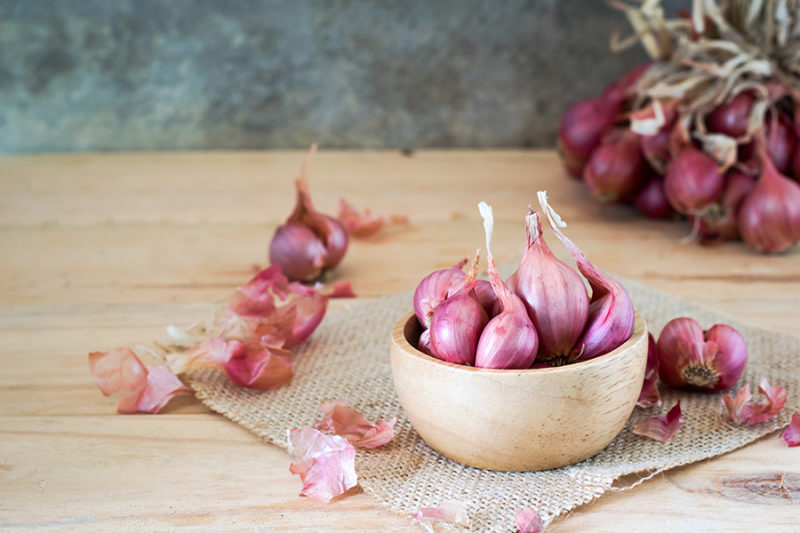
Like garlic, shallots must be peeled before use, but it’s not always easy to get that layer of skin off of the tasty edible bulb. To make removal easier, pour boiling water over your shallots, drain the water after about 10 minutes and then peel away. The process makes peeling easier because it softens the skin.
When chopping, slicing, or dicing shallots, use a sharp knife and start cutting with the root end still attached. This trick works with onions, as well.
My favorite way to combat tears when slicing shallots (and onions) is to wrap a scarf around my neck and wear wrap-around glasses or goggles. You’ll look a little weird, but it keeps the fumes from attacking your sensitive eyeballs. While cutting onions underwater works well, it’s a bit more challenging to do so with shallots since they’re so much smaller.
Use them sparingly. Sweeter than onions, shallots can be used in smaller quantities. Avoid going overboard when adding shallots to a recipe.
Use shallots to flavor vinaigrette. The sweetness and combination of onion and garlic flavor work tremendously well in salad dressings.
Use low heat. Low and slow is the name of the game when cooking shallots. High heat will easily burn these delicate vegetables.
The Bottom Line on Growing Shallots
Trust me, once you’re digging out the delicious results, you’ll be glad you took the time to grow shallots. Be sure to share your results with us in the comments.
